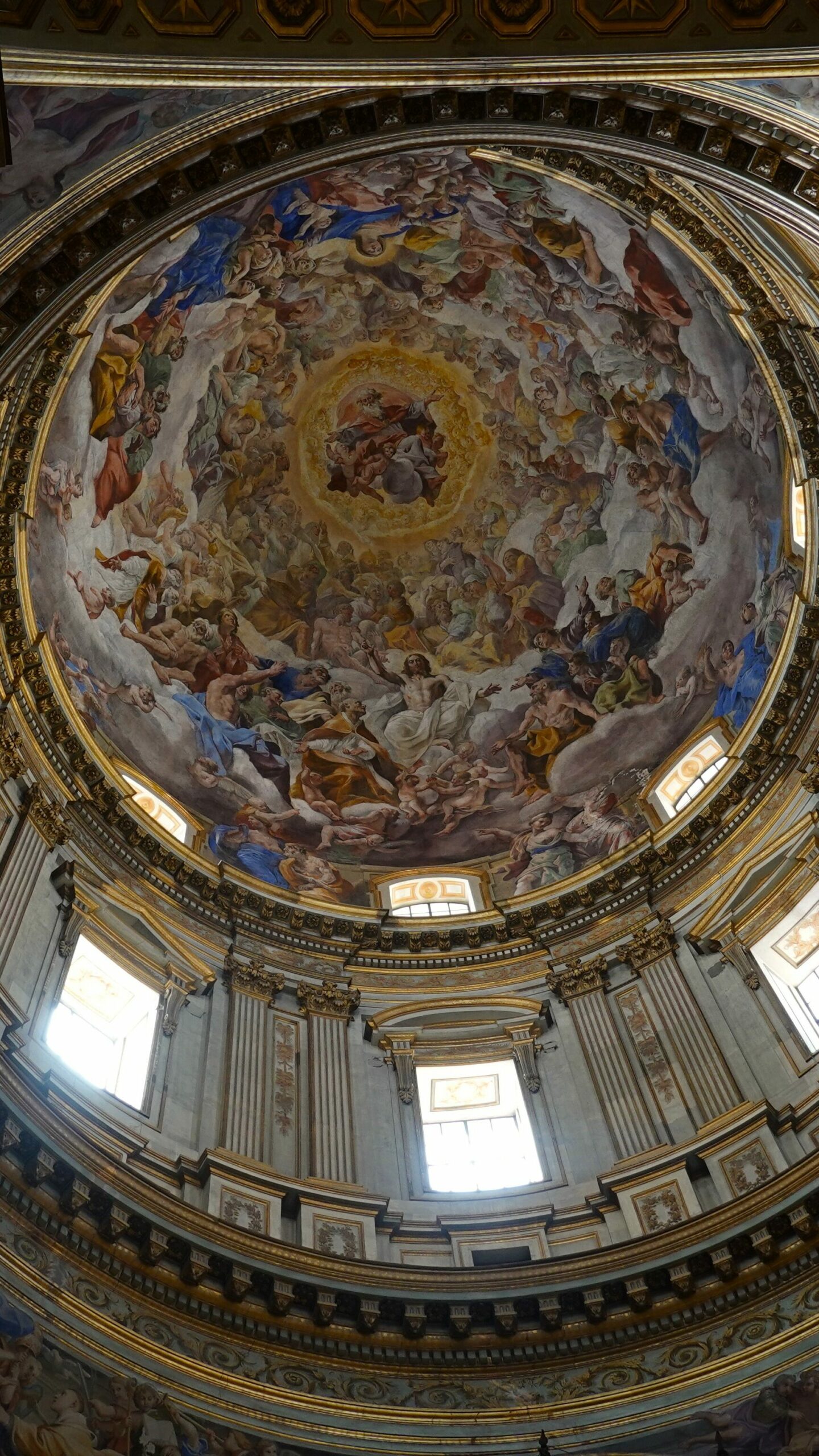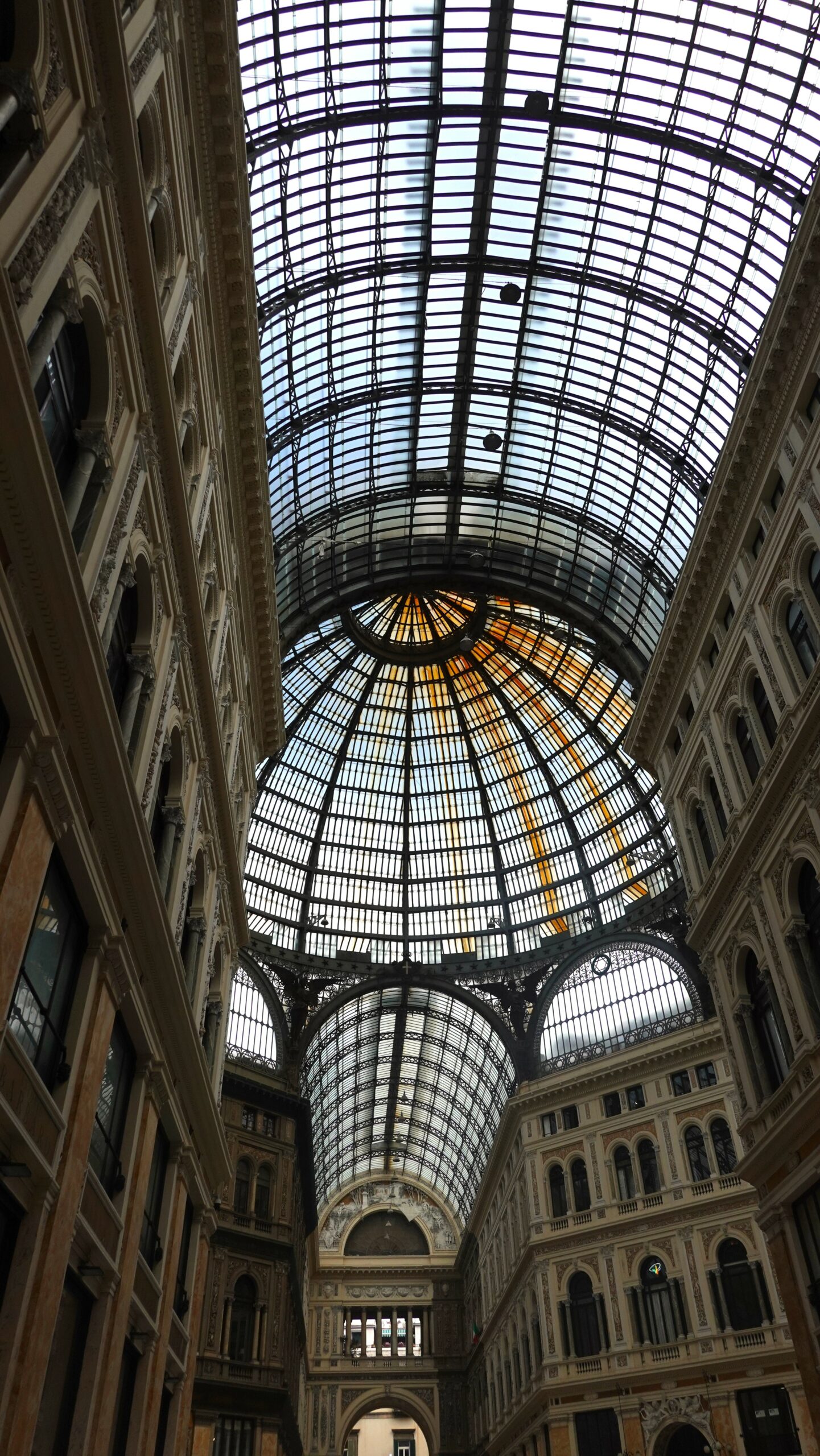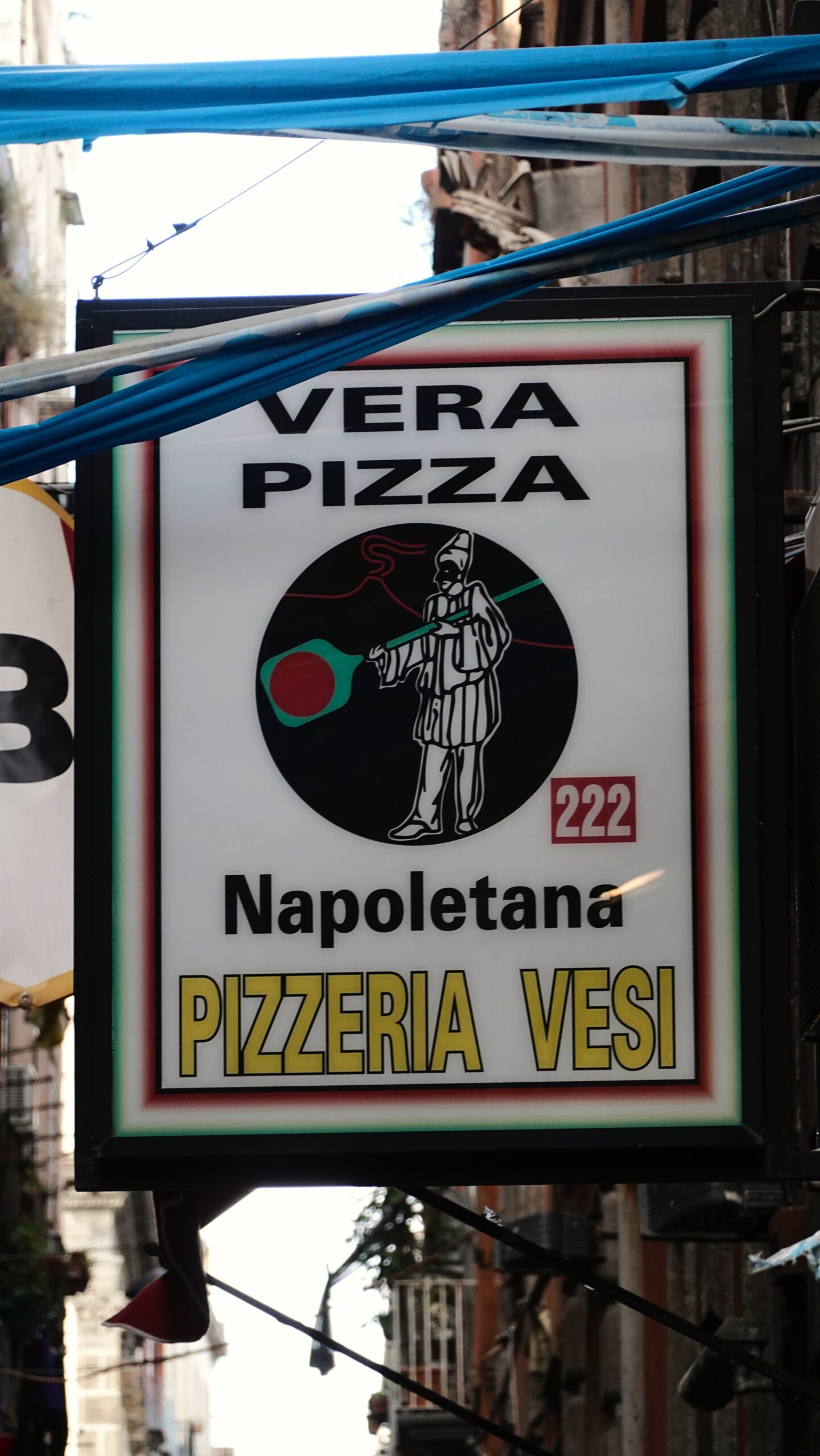Embark on a journey through Southern Italy’s most captivating historical and cultural treasures. With our unforgettable four-day adventure in Naples, Pompeii, Herculaneum, and the majestic Reggia di Caserta you will know what Naples feels like. From the vibrant streets of Naples to the haunting ruins of Pompeii and Herculaneum. You’ll discover history in its most vivid form. Concluding the trip, a visit to the grand Reggia di Caserta immerses you in regal splendor. Showcasing one of Italy’s most opulent palaces. Whether you’re a history enthusiast or a lover of Italian culture, this itinerary promises an enriching escape filled with stories of resilience, art, and architectural brilliance.
We will divide this blog into 3 parts, one with activities and sights in Naples, one with a day trip to Pompeii and Herculaneum and one with a day trip to Reggia di Caserta. We did these activities in 4 days since I was feeling sick during this trip and therefore had to take occasional moments of much-needed rest.
If you are hopefully not feeling sick during your trip to Naples you could do these activities in 3 days. However, we did not see everything in Naples, so we think 4 days is the minimum.
Ready to walk through centuries of history and uncover the secrets of Southern Italy? Let’s dive in!
Naples
Naples, the vibrant capital of Italy’s Campania region, is a city rich in history, culture, and charm. Nestled along the Bay of Naples with Mount Vesuvius as its dramatic backdrop, it is one of the oldest continuously inhabited cities in the world. Today, Naples is celebrated for its historic center, an UNESCO World Heritage Site, and its deep-rooted traditions, including being the birthplace of pizza.

Historic Center of Naples
The historic center of Naples is a treasure trove of history and culture, spanning over 2,500 years. Founded by the Greeks as Neapolis in the 6th century BCE, it later flourished under Roman rule. The medieval, Renaissance, and Baroque periods left a rich architectural legacy. You can see the influences in landmarks like the Spaccanapoli district, the Naples Cathedral, and the stunning Santa Chiara Monastery. Its narrow streets, historic piazzas, and hidden underground ruins showcase a living city where ancient history blends seamlessly with modern life.



We stayed in a beautiful apartment in historic center of Naples. Palazzo d’Auria Aparthotel offers a perfect blend of historic charm and modern comfort in the heart of Naples. Housed in a beautifully restored historic building, the Palazzo d’Auria ApartHotel features stylish, spacious apartments with contemporary amenities, making it ideal for both short and extended stays. It provides easy access to Naples’ iconic attractions, including Spaccanapoli, the Naples Cathedral, and bustling local markets. With its blend of elegance, convenience, and authentic Neapolitan character, Palazzo d’Auria ensures a memorable stay.



Naples Cathedral
Naples Cathedral, or Cattedrale di Santa Maria Assunta, is a stunning architectural masterpiece and the city’s most significant religious site. Built in the 13th century on the foundations of earlier churches, it showcases a blend of Gothic, Renaissance, and Baroque styles. The cathedral is dedicated to Naples’ patron saint, San Gennaro, whose blood is captured here. Highlights include the richly decorated Chapel of San Gennaro, the ancient Baptistery of San Giovanni in Fonte, and its frescoes. Naples Cathedral stands as a symbol of faith and history, drawing visitors with its spiritual and artistic heritage.






The Cloister Of Santa Chiara
The Cloister of Santa Chiara in Naples is a serene oasis within the bustling city, part of the larger Santa Chiara Monastery Complex. Frescoed walls and well-tended gardens that evoke tranquility and reflection are surrounding the cloister. This historic site reflects the artistry and devotion of Naples’ medieval past, making it a must-visit for those exploring the city’s rich cultural heritage.



Chiesa del Gesù Nuovo
The Chiesa del Gesù Nuovo in Naples is a striking Baroque church located in the heart of the city. The church is known for its unique façade, which features a pattern of diamond-shaped stones that create a stunning effect. Richly decorated interior, including elaborate frescoes, ornate altars, and beautiful wooden ceilings make this church worth visiting.

The Royal Palace of Naples (Palazzo Reale)
The Royal Palace of Naples is a historical landmark located in the heart of the city, overlooking Piazza del Plebiscito. Built in the 16th century for the Spanish Viceroys, it later became the residence of the Bourbon kings of Naples. The palace has stunning architecture, grandiose rooms, and beautiful furnishings. Visitors can explore its lavish interiors, including the Throne Room, Palatine Chapel, and Royal Apartments, all adorned with magnificent artwork and period decor. The palace also offers breathtaking views of the Gulf of Naples from its gardens.




Basilica Reale Pontificia San Francesco da Paola
Facing the Royal Palace of Naples lies The Basilica Reale Pontificia San Francesco da Paola. Built in the 19th century to honor Saint Francis of Paola, the church was commissioned by King Ferdinand I of the Two Sicilies. Its grand façade, with a striking portico and large central dome, draws inspiration from ancient Roman architecture. Inside, the basilica features elegant columns, altars, and beautiful frescoes, creating a serene and majestic atmosphere. A symbol of Naples’ royal history, it stands as both a place of worship and a testament to the city’s artistic heritage.


Galleria Umberto I
From Piazza del Plebiscito, it is a few minutes walk to The Galleria Umberto I. It’s a magnificent shopping gallery located in the heart of Naples, near the famous Teatro di San Carlo. Built between 1887 and 1891, this elegant, glass-roofed arcade features stunning architecture, including its circular glass dome. The gallery houses a variety of luxury brand boutique, cafes, and theaters, making it both a commercial and cultural hub. The Galleria remains a beloved symbol of the city, blending history, art, and modern life.


Quartieri Spagnoli
Quartieri Spagnoli (Spanish Quarters) is a historic and vibrant neighborhood in the heart of Naples. Built in the 16th century for Spanish soldiers stationed in the city, the area is known for its narrow, winding streets, lively atmosphere, and colorful buildings. It offers a glimpse into traditional Neapolitan life, with bustling markets, small local shops, and authentic eateries. Despite its reputation for being densely populated, it remains a dynamic and cultural hub, rich in history and local character.


In the Quartieri Spagnoli, you can find street art and murals dedicated to Maradona scattered throughout the area. Particularly near his former fans’ hangouts and local bars. One of the most famous displays is a mural on Largo Maradona, where Maradona is painted on the side of a building in a larger-than-life tribute. It’s not just a symbol of his sports achievements, but a reflection of how he gave the people of Naples pride, a sense of belonging, and moments of collective joy.



After Maradona’s passing in 2020, the devotion to him only deepened. The Quartieri Spagnoli became a gathering place for fans to honor his memory, with people often leaving flowers, scarves, and candles around the murals. The area remains a pilgrimage site for football fans and admirers of the man who made Naples proud on the global stage.

Food in Naples (Especially Pizza)
Naples is widely regarded as the birthplace of pizza, and its culinary scene is a vibrant mix of traditional Italian flavors and Neapolitan specialties. Naples’ pizza is distinguished by its soft, chewy interior and slightly charred, thin crust—thanks to being cooked in a high-temperature wood-fired oven. Local markets, street food, and family-run trattorias offer an authentic taste of Naples’ culinary traditions.



Day Trip to Pompeii (and Herculaneum)
On our first day trip from Naples, we ventured back in time to explore two of the most iconic ancient cities in Italy—Pompeii and Herculaneum.
Pompeii and Herculaneum are ancient Roman cities famously destroyed and buried by the eruption of Mount Vesuvius in 79 AD. Pompeii, the larger of the two, was a thriving city with well-preserved streets, homes, temples, and baths. It’s offering a detailed glimpse into daily life in the Roman Empire. Herculaneum, though smaller, was even better preserved due to its deeper burial under volcanic material, which helped protect wooden structures and intricate frescoes. Both sites are incredibly significant for their archaeological value, providing insight into ancient Roman architecture, art, and society.

Visiting Pompeii and Herculaneum is a must for history enthusiasts. Pompeii is easily accessible by train or car from Naples. It offers extensive guided tours, allowing visitors to explore its vast ruins. Herculaneum, located closer to the coast, is smaller and more intimate, but also requires time to truly appreciate its preserved homes and artifacts. Both sites have modern amenities, including visitor centers and cafes, making for an enriching and accessible experience. To fully explore both sights, you don’t necessarily need a guided tour. However, it does give a more complete idea of the tragedies that took place here.
Visiting Pompeii and Herculaneum by Train
To combine a visit to Pompeii and Herculaneum in one day from Naples, you can follow this efficient itinerary:
Morning: Visit Pompeii
- Depart from Naples: Take the Circumvesuviana Line from Naples Centrale (or Piazza Garibaldi) to Pompei Scavi – Villa dei Misteri station. The train ride takes about 30-40 minutes.
- Tickets: Tickets you can purchase at the station or online.
- Explore Pompeii: Start your visit early to make the most of your time. Pompeii is large, so plan to spend around 2-3 hours exploring the ruins. You can focus on key sites like the Forum, Villa of the Mysteries, and the amphitheater.
- Lunch: After your visit, you can grab lunch in the town of Pompeii.



Afternoon: Visit Herculaneum
- Head to Herculaneum: After lunch, return to Pompei Scavi station and board the Circumvesuviana Line towards Ercolano Scavi. The train ride is quick, taking around 20 minutes.
- Explore Herculaneum: This site is smaller than Pompeii, so you can explore it thoroughly in about 1.5 to 2 hours. Don’t miss highlights like the Villa of the Papyri and the well-preserved frescoes and mosaics in the homes.
- Return to Naples: After your visit, the Ercolano Scavi station is right by the entrance, and trains back to Naples Centrale run frequently. The journey takes about 20 minutes.

Tips:
- Start Early: Aim to leave Naples by 8:00 or 8:30 AM to maximize your time at both sites (around 10/11 o’clock or so it gets very busy with tour groups at Pompeii).
- Travel Light: Both sites involve walking, so it’s best to bring only what you need.
- Stay on Schedule: While it’s possible to visit both sites in one day, it’s important to manage your time effectively. Pompeii will require the most time, while Herculaneum is more compact and can be done in a shorter period.
- Lunch: Miza Sushi Pompeii (one of our best sushi experience). In any case, walk down the road to the left down the hill (from the entrance of the historic part of Pompeii point of view). Immediately before the entrance are restaurants with not such great reviews which is often the case in super touristy places.
By using the train connections and sticking to a timed schedule, you can enjoy both these fascinating archaeological sites in a single day.
Day Trip to Reggia di Caserta (Royal Palace of Caserta)
Our second day trip from Naples to Reggia di Caserta was a journey into royal splendor and history. Just a short train ride from the city, this magnificent palace, often compared to Versailles, is one of Italy’s most impressive UNESCO World Heritage sites. With its stunning Baroque architecture, expansive gardens, and opulent interiors, the Reggia di Caserta offers a glimpse into the grandeur of the Bourbon monarchy. From exploring the grand halls to wandering through the lush gardens, this visit was a perfect look into Italy’s royal past. Here’s a look at our unforgettable experience at this extraordinary palace.



Visiting The Reggia di Caserta by Train
To visit the Reggia di Caserta from Naples by train, follow these steps:
- Departure:
- Go to Naples Centrale station, which is the main train station in Naples.
- Train Options:
- Take a Regionale (regional) train heading to Caserta. These trains run frequently throughout the day and the journey takes about 30-40 minutes.
- Make sure to check the train schedule as there are multiple trains available, typically every 30 minutes.
- Arrival:
- Get off at the Caserta train station.
- Once you arrive, the Reggia di Caserta is about a 10-15 minute walk from the station. The walk is straightforward and will take you through the city center towards the palace.
- Return:
- After visiting the Reggia di Caserta, return to the Caserta station and take the same Regionale train back to Naples Centrale.
Tips:
- Tickets: Tickets you can purchase at the station or online. A round-trip ticket should cost around €4-6.
- Train Frequency: Trains run regularly, making it easy to return to Naples when you’re ready.
- Timing: Plan for around 2-3 hours at the Reggia di Caserta to fully explore the palace and its gardens.

End of our Journey in Naples
Our 4 fantastic days in Naples offered the perfect balance of history, culture, food, and relaxation. From exploring the ancient ruins of Pompeii and Herculaneum to marveling at the grandeur of the Reggia di Caserta, each day was filled with unforgettable experiences. We wandered the vibrant streets of Naples’ historic center, tasted authentic Neapolitan pizza, and immersed ourselves in the city’s unique atmosphere. Four days in Naples allowed us to see its main attractions at a comfortable pace without feeling rushed. With enough time to explore its rich history, sample the local cuisine, and take in the stunning views of the Gulf of Naples, four days felt like the good amount of time to truly experience this fascinating city. But having said that, you can certainly spend 1 or 2 more days there with, for example, a day trip to the beautiful Amalfi Coast.
Our overall experience in Naples was very safe, with not a single incident occurring during our stay. Despite its reputation, we found the city vibrant and welcoming, with no issues of theft, scams, or personal safety. By staying aware of our surroundings and avoiding overly crowded areas at night, we enjoyed exploring Naples’ lively streets, historic sites, and local culture without any problems.
Tips:
Staying near Naples’ central station (Napoli Centrale) might not be ideal due to several reasons:
- Safety Concerns: The area is known for pickpocketing, petty crime, and occasional scams, especially targeting tourists.
- Noise and Crowds: It’s a busy transport hub, so the streets can be loud and chaotic, particularly at night.
- Cleanliness Issues: The neighborhood may not be as clean or well-maintained as other parts of the city.
- Limited Charm: The surroundings lack the historic and authentic atmosphere found in other neighborhoods like the Spanish Quarter, Chiaia, Vomero or the historic old centre.
* This post may contain affiliate links, which means we may earn a small commission if you click through our link and make a purchase at no extra cost to you.

